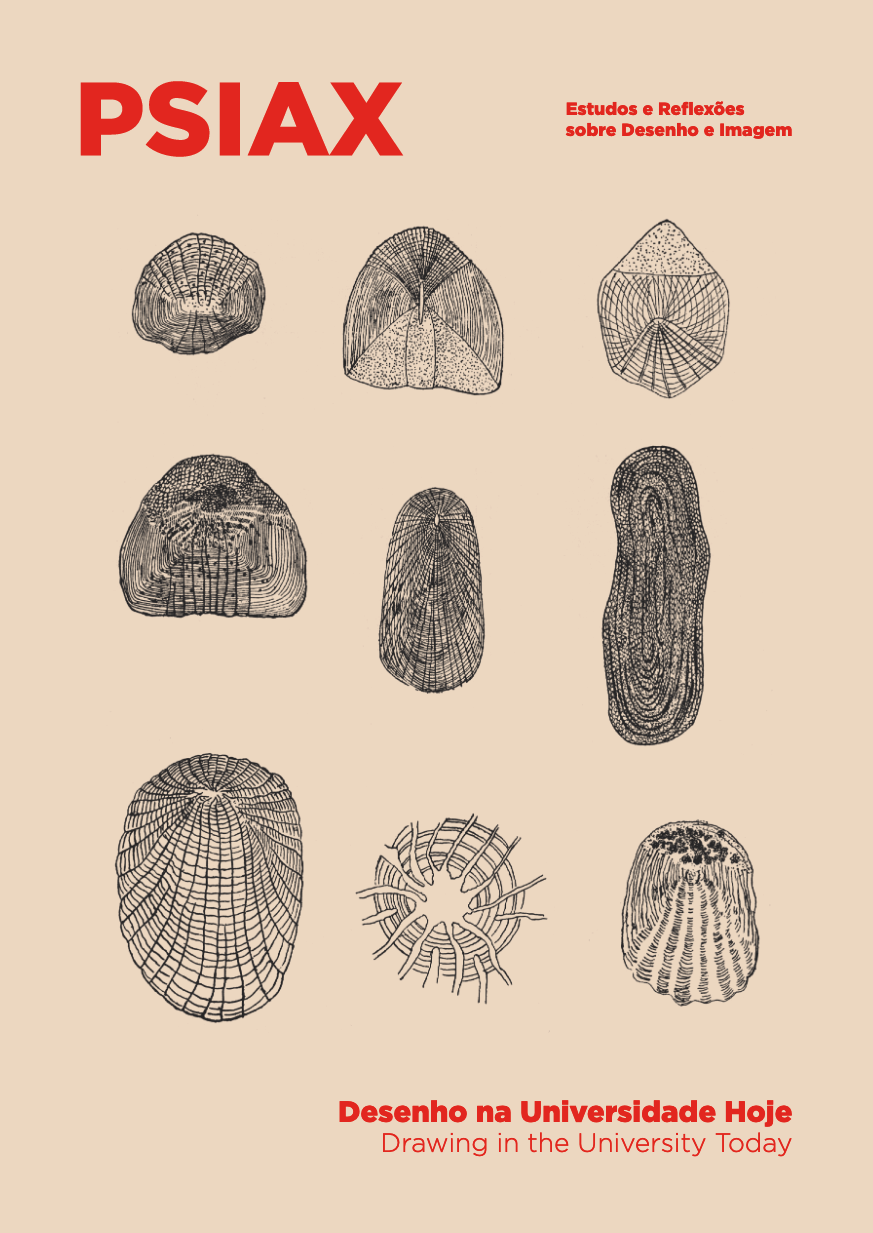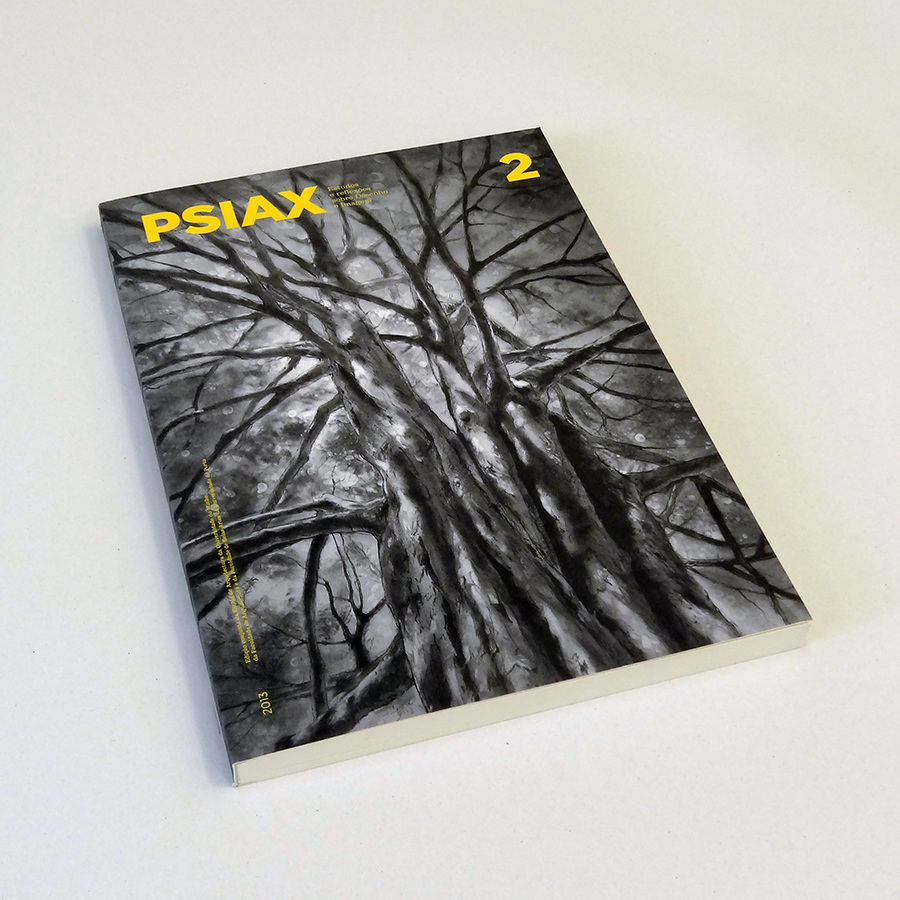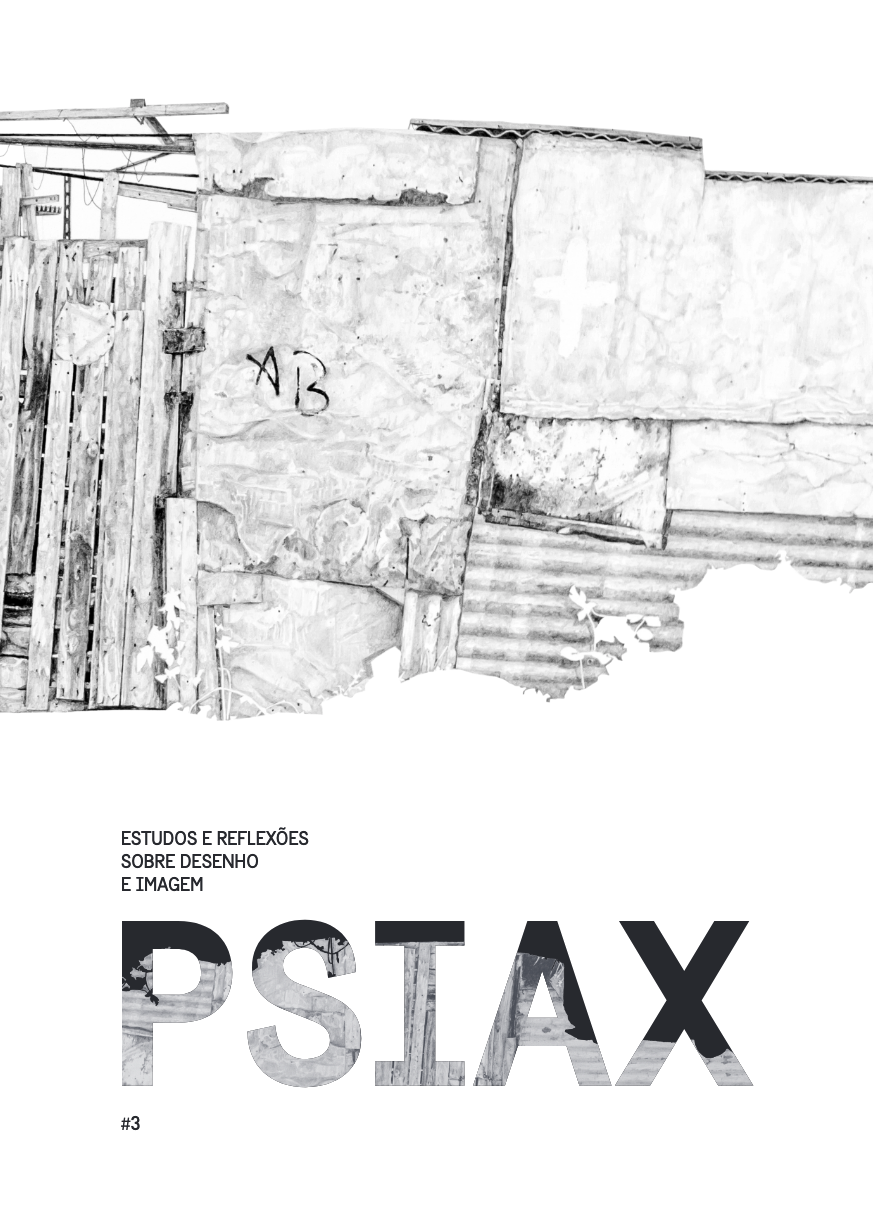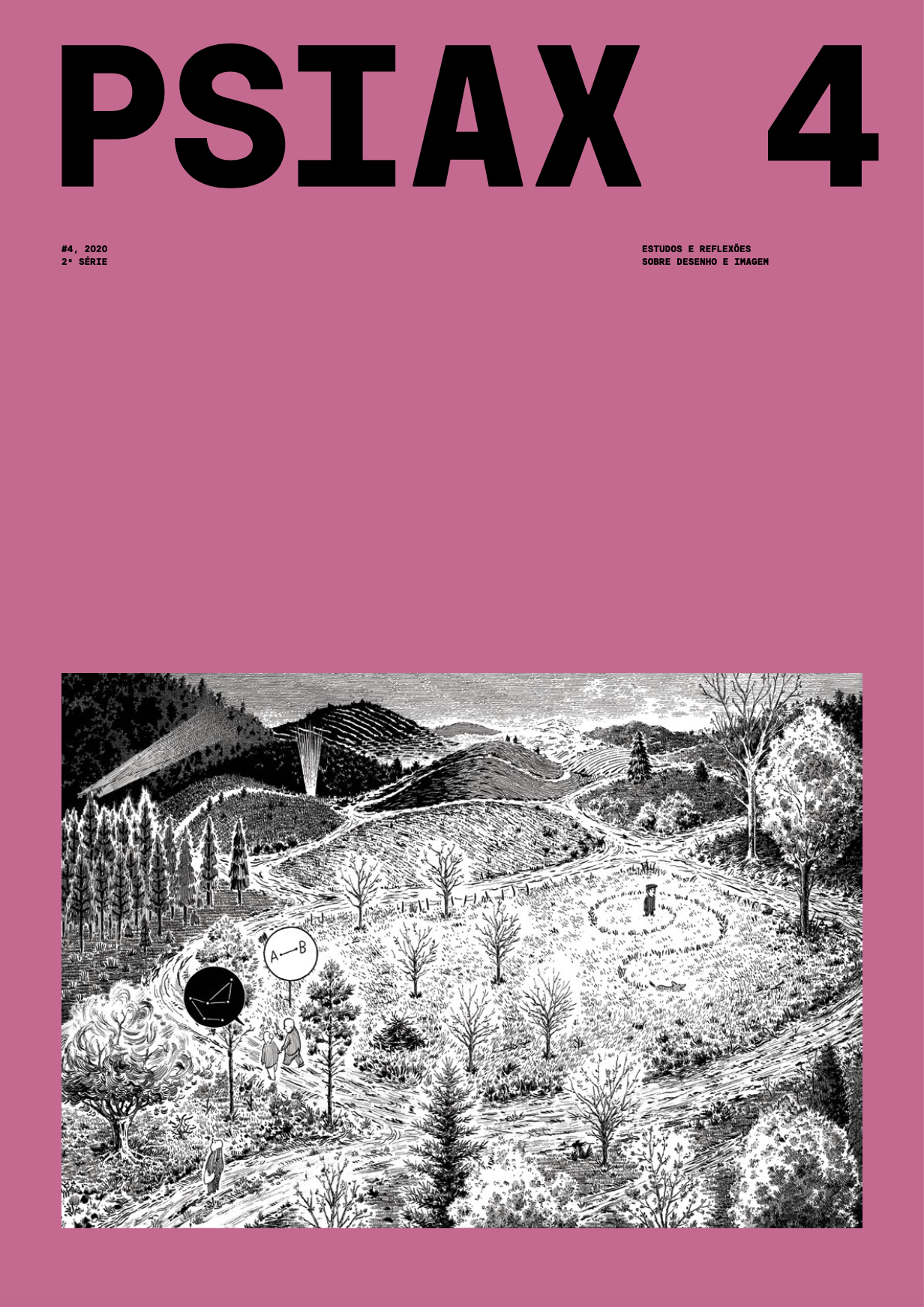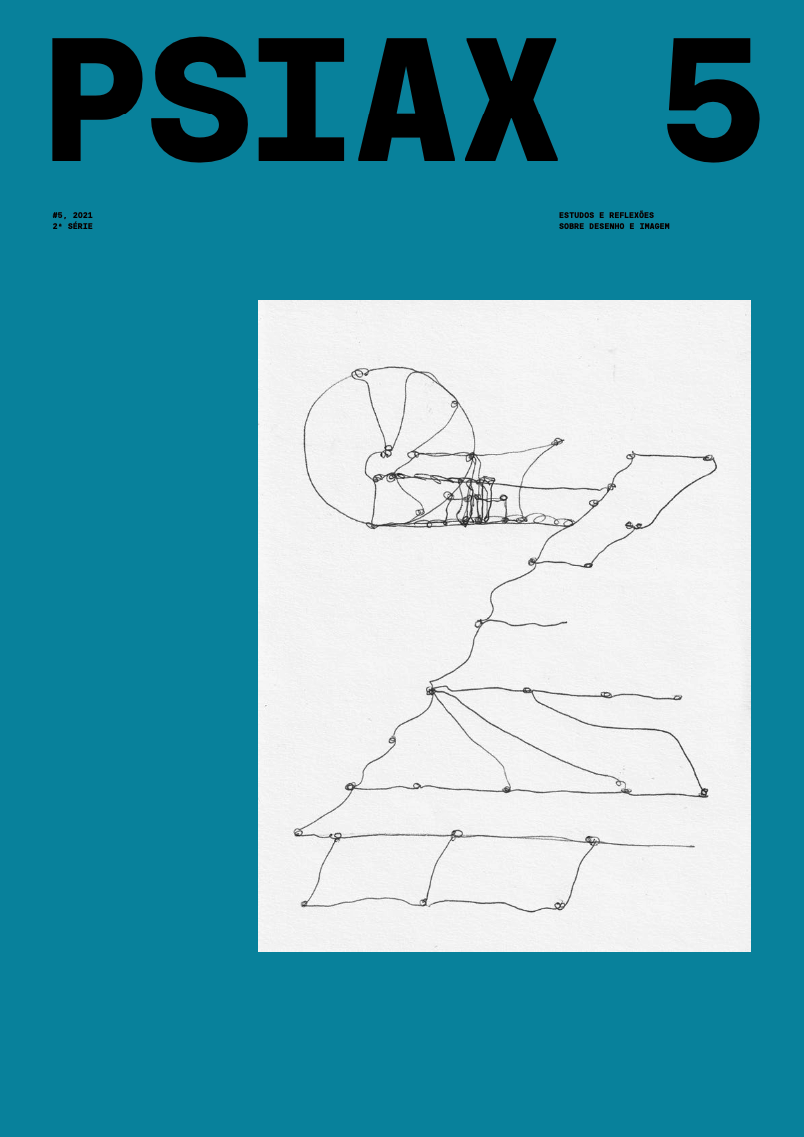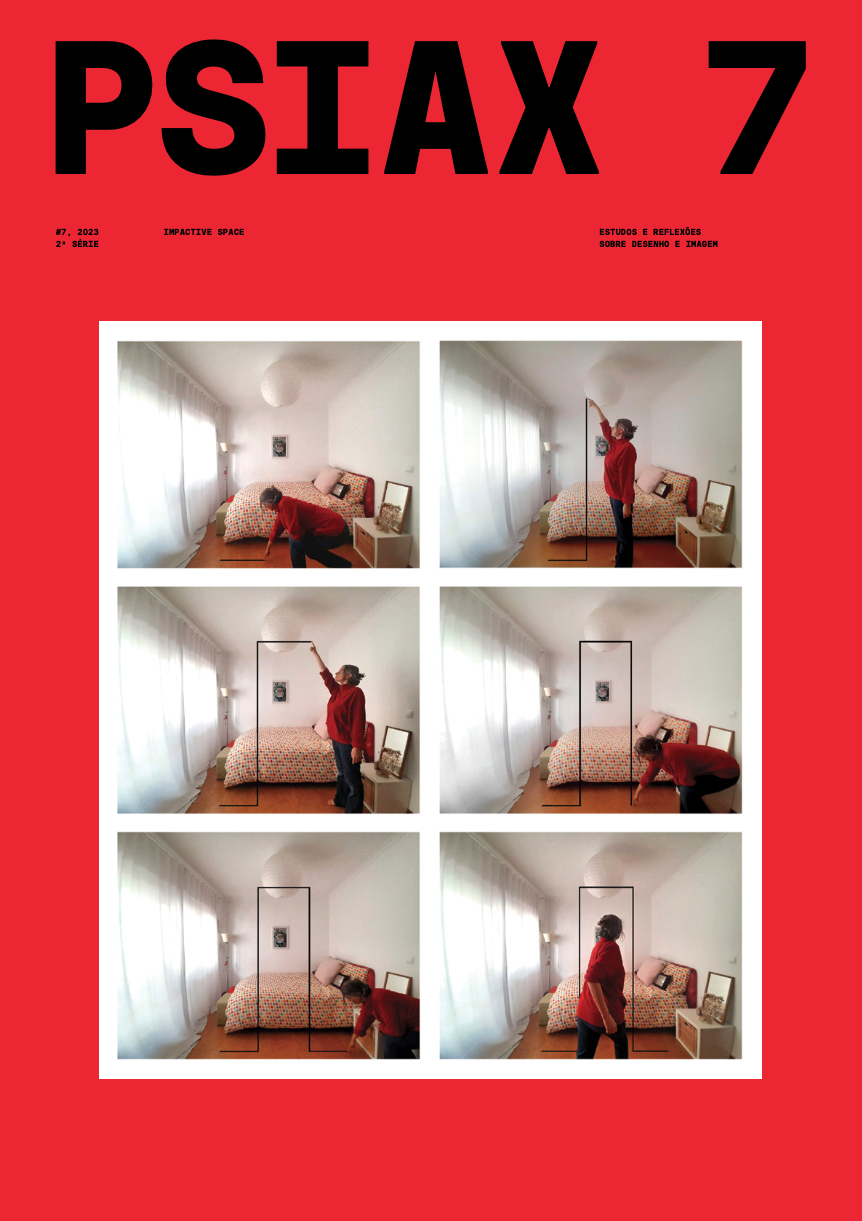
revista
PSIAX #7 — Série II
The five articles in this PSIAX Special Issue are variously informative of practice-based artistic methods that infer and manifest perception in action, by which means perception is simultaneously observed. The particular focus on this occasion is impactive space, a coined theme for the set of papers relating to the existing theorised term liminality; a middle space, in a sense, that is charged by circumstances either side.
- Edição
- Natacha Antão, Michael Croft, Sílvia Simões, Vítor Silva
- Ano
- 2023
- isbn | issn
- 1647-8045
- doi
- https://doi.org/10.34626/2023/1647-8045
A Closure that leaves Openings for New Beginnings: five artist/researchers’ contributions to a theme for visual/material exploration titled impactive space
Perception in its five manifestations, available to experience more or less, exists as external sources that are brought into cooperation with the human through the body. While, arguably, it is not a simple binary situation, there is a sense of alternation between reception and receiver. Even if the human is only tacitly assumed to be the receiver, as in the case for example of an artist who does not acknowledge subjective relationship with what he/she is doing, an artist does in most circumstances play the role of instigating agent. The materiality of the relationship can be whatever is the conduit, which is often what is produced, and speaks about the said relationship in ways that point up both the integralism and uniqueness between the source of, and recipient of, the sensory perception. Put simply, the conduit may be the perception itself.
A group of five artists, hosted by i2ADS, Research Institute of Art, Design and Society, have come together to conduct a research project that concerns the observation of perception, considered through drawing. While these artists’ sensory source is mainly visual, this does not exclude recourse to other senses that are variously implicated, if not always deliberated, in artistic activity. Couple with this the question of research, since the approach of the five artists is neither conventionally academic, nor solely artistic. What emerges as a result of the former is interest in how theory can provide both framing and interaction. The research’s participants variously utilise theory pertaining to interoception, experiential connection with space, tuchè and contingency, objective reality versus imaginary narrative, and the psychodynamic unconscious.
Such theoretical resources inform rather than overly shape these artists’ respective practices, which is an important distinction to make between the academic and the practical as here used. Theories that at-once position and obfuscate the human subject might exist antagonistically with more directly experiential theories, such as embodiment or phenomenology. Original Aristotelian and other philosophical notions may prioritize a subject’s direction towards externalisation, for which reason a bigger existential perspective is explored in a visual practice. Digital tools and modes of working either interact ambiguously with physical pencil, brush and collage, or such traditional tools are employed exclusively. In terms of conversation, however, while artist and their references perform as a type of dialogue cooperatively with practice, the latter will ultimately step clear of such conversation with its own external voice. In this sense, the visual-material work itself may represent, if not be, the perception oscillating in the middle of that which is sensorily perceivable and available to experience.
The five articles in this PSIAX Special Issue are variously informative of practice-based artistic methods that infer and manifest perception in action, by which means perception is simultaneously observed. The particular focus on this occasion is impactive space, a coined theme for the set of papers relating to the existing theorised term liminality; a middle space, in a sense, that is charged by circumstances either side. The philosopher Alain Badiou (2018, pp. 204-5, citing Jean-Claude Milner), argues that the human subject from the psychoanalytical perspective is automatically inside liminality – therefore inside this middle-referenced space. The distinction is that while philosophy may be considered as the ability to discuss being without recourse to fluctuations of the individual subject of being, psychoanalysis presupposes the subject, especially the unconscious subject, as automatically within the midst of any such question. This question of at-once inside, or of outside looking in, may in phenomenological terms be the ratio between reflexively creative activity and reflection on such activity after the event, however close may be the two positions in time. The five articles can be compared and contrasted in either of these two suggested considerations, the aggregate of which is a presumption of the experiential basis of perception. While it would be convenient to suggest that each of the five artists are outside liminality for purposes of thinking about impactive space, irrespective of the extent, if any, to which they are inside liminality in their practices, this is not consistently the case with their writing. If such writing is considered itself as- rather than about impactive space, then instances of liminal-written are as apparent as, if not more apparent than, the liminal-visualised.
In Garry Barker’s article, interoception provides the theoretical focus of what in Barker’s practice concerns the visualisation of somatic pain, and is in his view ‘… central… to an understanding of perception’. Barker argues such a view through his own recent experience of Covid 19, during which he gained heightened awareness of how breathing can constitute a kind of ‘crossing point between subject and object’. Barker has recourse to his memory of dream imagery that alludes to his experience of his own somatic suffering in which ‘inside and outside experiences were blurred’. Barker states that he wishes to ‘capture the feeling tone of the experience’, and references the philosopher Edmund Husserl (1859-1938) to suggest that one’s imaginative capacity is linked with what he terms one’s ‘deep corporeal grounding’.
Safa Tharib takes a more distanced position of himself in relation to his visual-material practice when he suggests, in the context of digital-artistically derived fictional narrative, that the concern of the article is with ‘a connection between the objective reality and the liminal space of the spectator’. Tharib references the film critic and theorist André Bazin (1918 – 1958) on objective and temporal reality, and the philosopher Paul Ricoeur (1913 – 2005) on the constantly transitional state of narrative. While Tharib’s own liminal involvement in his practice is much less stated than Barker’s, he does discuss and show how he uses real physical locations of his own experience, subject to his own ‘skills and weakness in the representation of the subject matter’.
Derek Pigrum plays off a psychoanalytical perspective on the weave as a semiotic signifier that is both a ‘symptom’ and – deduced from the cultural critic and philosopher Walter Benjamin’s (1892-1940) tendency to ‘bound memory, dream, and text work together’ – as a ‘multi-mode artefact’, against the philosopher Bruno Latour’s (1947 – 2022) notion of “circulating reference” (Latour, 1999). The latter reference suggests of images ‘coming from the outside’, due also to their tendency towards tuchè and contingent occurrence, that they slowly result in ‘actualization and a closure that leaves openings’ that can suggest new beginnings. Regarding the question of Pigrum’s liminal presence within his article, the Benjamin quote cites text as itself part of the weave that Pigrum equates with symptom, and he variously identifies himself as ‘we’ within the text and distances himself from it through use of the 3rd person.
John Stell takes as his motif a space that he has had personal connection for sixty years, and seeks to understand it from the point of view of experience through drawing, taking as his theoretical basis the concept of “extensive connection” (Whitehead, 1929) of the philosopher A. N. Whitehead (1861 – 1947) and such terms as inside, through and between relating to computational practices in Artificial Intelligence. Stell’s reports on the second and third of a set of three drawings contrast an approach to the second drawing in which he had ‘a sense of recording… an ongoing event that I was a part of’, and the episodic nature of the third drawing where he is ‘struck by the way the space is separate from my experience of it’. Such phraseology suggests that one can be either inside or outside liminality according to the strategies necessary to conduct the drawings.
Michael Croft presents the process of visualising a hallucinatory phantom of a nightmare in a doorframe of the domestic space of his flat, where the latter acts as a space that was consequently transformed as impactive. The middle-ness of such a space is argued, via the psychoanalyst Jacques Lacan’s (1901 – 1981) theory of the scopic drive, as analogous to the obfuscation of one’s gaze by a psychic screen. Croft represents himself in the place of the phantom, most cogently in terms of being inside liminality when he feels and registers the distortion of the architecture of a utility room in which the phantom was perceived through ‘subjective factors of human vision; trying to locate my experience of the space through the projection into it of my body…’
In closing, and to re-absorb the question of liminality into the research project’s abiding question of perception, each author confers on the tendency of perception itself to oscillate spatially, considered subjectively but seeking physical metaphors for varying reasons. For example: perception can be influenced by multiple factors; one’s externally negotiated psyche can be considered to operate both amidst and as one’s perception; perception can be viewed as a parameter, along with consciousness, between which is the unconscious; perception is externally projected from the internal and can then be re-absorbed by the body; perception as spatial experience can be mediated by drawing. While each article is a consideration of impactive space through the medium of drawing, and involves perception, the latter phenomenon is in some respects displaced into writing as the medium. Further to the idea of voices of a conversation – to close, as it were, with suggestion of a new consideration – it is interesting to read and sense how the liminal exists in the writing of each author within their text.
Natacha Antão, Michael Croft, Sílvia Simões, Vítor Silva
Sobre PSIAX
Porquê Psiax? Psiax é o nome de um dos pintores de vasos gregos que terão introduzido a grande mudança do desenho com a técnica das figuras vermelhas no início do século V a.C. Este é um dos mais notáveis aspectos da arte do desenho e da sua adaptação a uma necessidade tecnológica, empresarial, ritual e social, num dos períodos mais relevantes da cultura grega. Se nos servirmos de uma analogia com a vida de Psiax na Grécia Clássica, e vivêssemos num período de figuras pretas, como se nos colocaria o quadro de inovação na representação da imagem nos artefactos que utilizamos dominantemente ou que poderão vir a ser utilizados? Ao ser produzido por meios digitais ou manuais, o que se inova e constrói? Como é que se acede a essas imagens? O que as caracteriza e como é que a representação ganha aspectos inovadores ou qualificadores da experiência artística? A orientação editorial pretende promover e divulgar estudos sobre o papel que o desenho poderá desempenhar no nosso tempo, quer ele se concretize como processo de compreender o mundo, quer como meio de aprendizagem e ensino, ou como elemento caracterizador essencial dos objectos artísticos já existentes ou a criar. Pretendemos dar a conhecer estudos sobre o desenho como imagem considerando que o desenho como arte plástica, manual ou digital, além de se constituir por um conjunto de elementos típicos e próprios da sua específica condição material, é, acima de tudo, uma imagem que ocupa lugares no universo infinito de outras imagens materiais, foto-químicas e electrónicas que hoje nos envolvem. Importa ligar o passado do desenho - autores, modalidades, temas, tendências, escolas - com as urgências e o sentido de progresso e de ideologia, com as hipóteses que se levantam, com as necessidades que vão da sobrevivência ao sonho, recuperando a memória longínqua do desenho e conduzindo-a para uma actualidade em que se exigem novos entendimentos de uma arte básica do ser-se humano. Interessa a publicação de estudos monográficos, analíticos, doutrinais, programáticos, metodológicos e críticos desde que se estabeleça, em qualquer dos âmbitos, uma relação entre o passado e o presente. Isto é, interessa colocar as diversas perspectivas em debate, em sintonia, em confronto, em paralelo, em analogia com os problemas, os esforços, as realidades, as obras e as teorias do nosso tempo, quer no domínio da pedagogia, da teoria e prática do desenho, quer no campo da expressão artística. A Psiax integra uma chamada internacional de participações e revisão cega por pares. Adotando práticas que visam ampliar os contributos e sua consequente disseminação, reforçando a confiança científica e artística dos conteúdos apresentados, contribuindo para a qualidade da investigação realizada nestes domínios de conhecimento.
